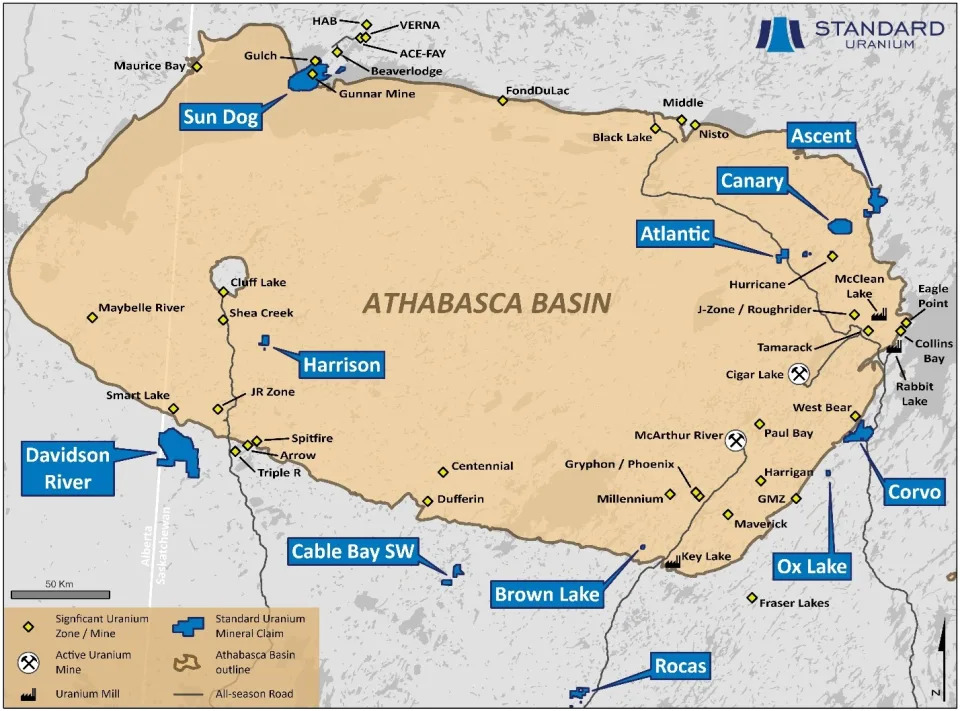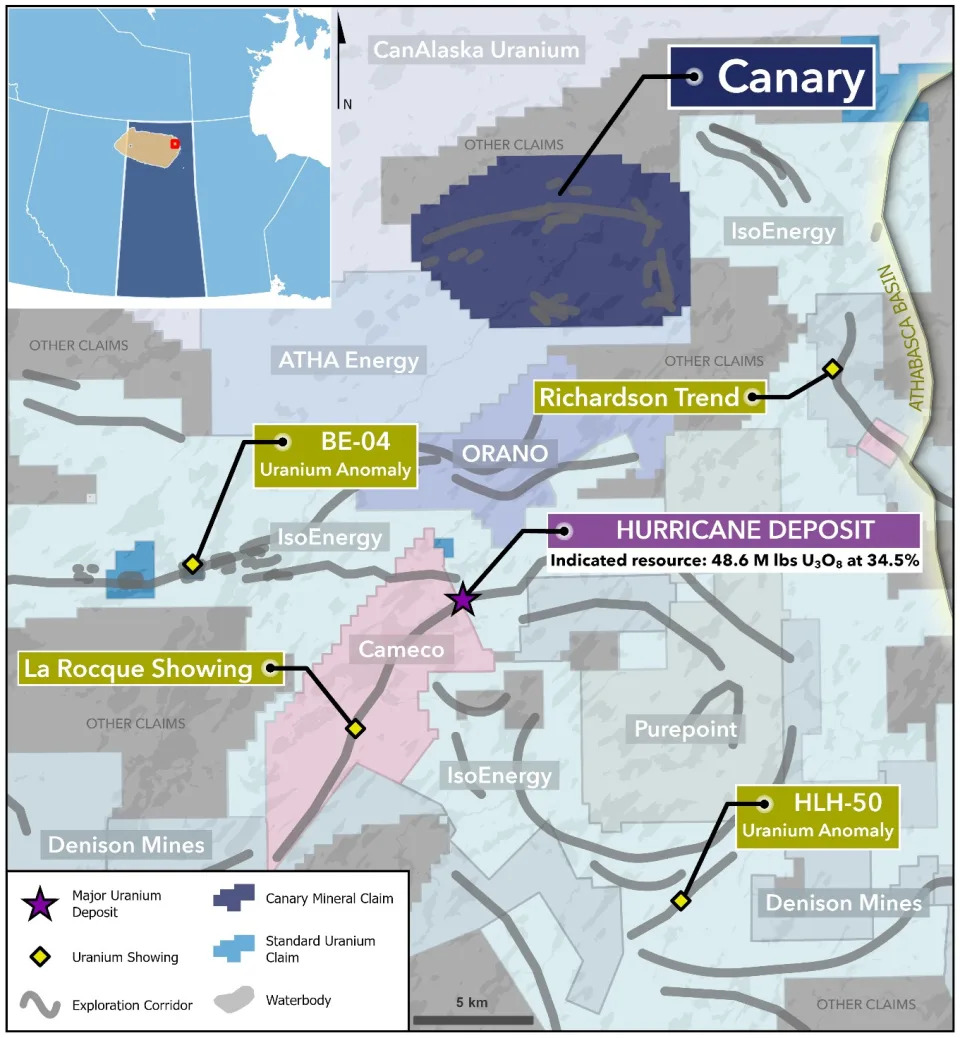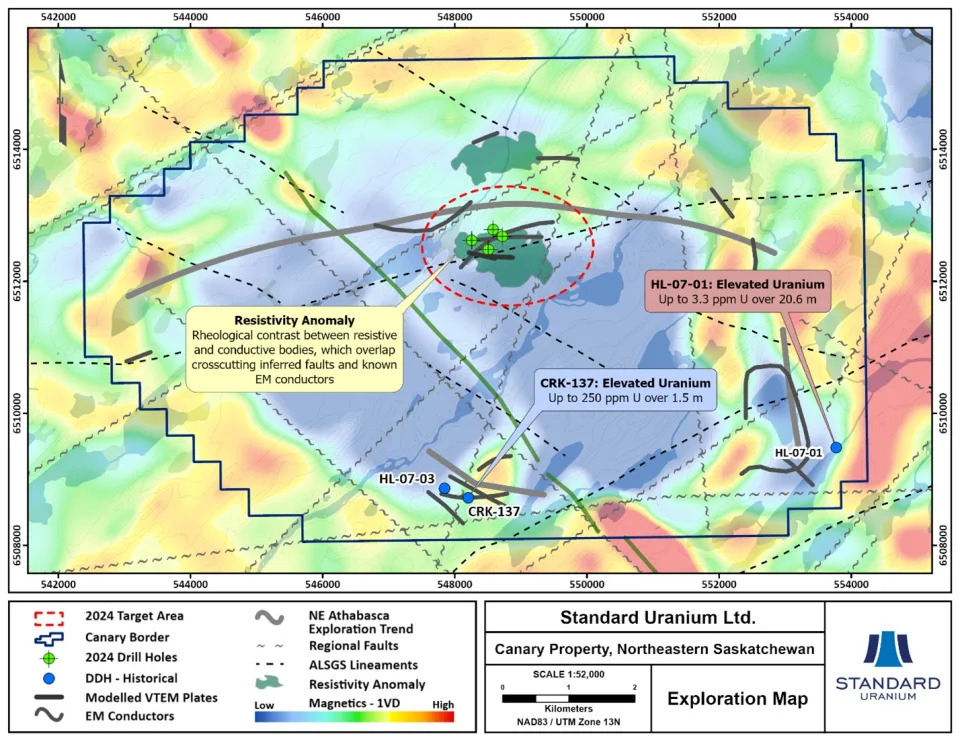
Standard Uranium (STND.V) is a junior uranium explorer operating in the Athabasca basin in Saskatchewan, Canada. The Company holds interest in over 209,867 acres in the world’s richest uranium district.
“Intersecting anomalous radioactivity and zones of hydrothermal alteration in a completely untested area on one of three conductive corridors on the Canary project is very encouraging. The results from this program have revealed packages of the ideal host rocks for basement-hosted uranium mineralization, in addition to a potential quartzite ridge which is an important feature present in other eastern Athabasca uranium deposits such as McArthur River and Phoenix,” said Sean Hillacre, Standard Uranium’s President and VP of Exploration. “The technical team and I are excited to continue our exploration efforts on the Project with our partners at Mamba and look forward to putting out more results through 2024 and begin testing additional target areas in Phase II and III drilling.”
- Inaugural Success: Anomalous radioactivity (>300 cps) was intersected in one of the four inaugural drill holes at the Canary Project, in addition to multiple zones of favorable alteration including hydrothermal silicification, clay, chlorite, and hematite.
- Hydrothermal U Input: Fracture-hosted elevated radioactivity was intersected in drill hole CAN-24-004 with Uranium:Thorium (“U:Th”) ratios >4:1 measured with a handheld RS-125 Super-Spec, suggesting hydrothermal uranium input.
- Shallow Targets: Drilling focused on high-priority targets refined by geophysical work completed by the Company in 2022. The unconformity on the Project was intersected ~220-250 metres below surface.
- Ahead of Schedule & Under Budget: Completion of 1,863 metres within 4 drill holes, surpassing meterage expectations more than a week ahead of schedule and under budget.
- Follow Up Targets & Next Steps: Canary holds significant upside for discovery along three different and significantly underexplored conductor systems. Supplementary geophysical surveys over all three corridors will provide further target areas for phase II and III drilling.
The Project is situated in the Mudjatik geological domain where several recent discoveries have been made, including IsoEnergy’s Hurricane Deposit located 11 km directly to the south, and is significantly underexplored relative to adjacent magnetic low/EM conductor corridors. Follow up targets are being planned as geological data from the spring 2024 program is processed and interpreted.
The drill program began on May 3rd and was completed ahead of schedule on May 31st, 2024. Local fracture-hosted anomalous radioactivity was intersected in the basement rocks of drill hole CAN-24-004. A handheld RS-125 scintillometer returned readings up to 410 counts per second (cps) from 449.0 to 449.5 m.
Basement intersections confirmed the presence of highly deformed and mylonitic metasedimentary and metasomatized rock packages across the northern corridor and defined a potential “quartzite ridge” in the corridor footwall. The rheology contrast between the softer metasedimentary rocks and resistant quartzite is interpreted as an important structural control on uranium mineralization and is a common feature of other well-known high-grade2 uranium deposits such as McArthur River and Pheonix. Multiple zones of significant silicification were intersected in the basement over intervals up to 15 metres thick associated with white clay alteration. Significant silicification zones are also known to be associated with several uranium deposits across the Basin.
Highly anomalous geochemistry and favorable alteration was returned from historical drill hole CRK-137 along the southeastern conductor, providing an exceptional follow-up target for Phase II drilling.

The stock has closed below major support at $0.22. The stock attempted to reclaim this support but the retest saw sellers jump in and the breakdown continues. There is some interim support coming up at $0.15. Watch to see signs of buying with large wick candles or a large green bodied candle. Major support comes in at the $0.10 zone.










